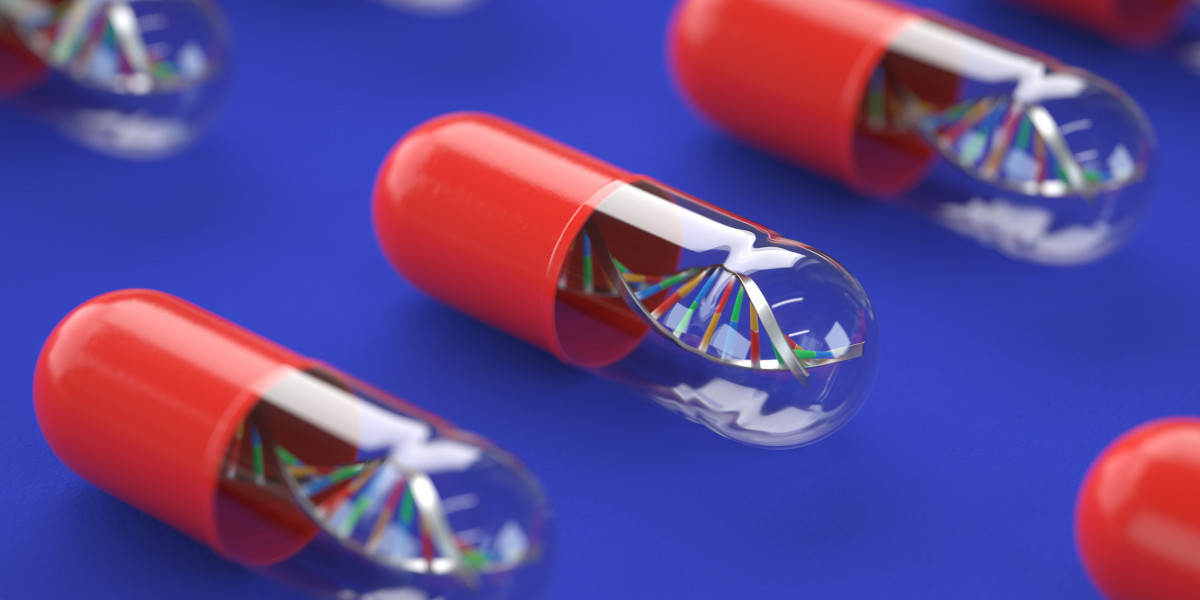Ribonucleic acid or RNA is a polymeric molecule similar to DNA that is essential in various biological roles like encoding, decoding, regulation and expression of genes. RNA consists of a chain made from four different types of nucleotides each containing a base and sugar (ribose) molecule. The four bases are adenine (A), guanine (G), cytosine (C), and uridine (U). RNA polymers, while structurally similar to DNA, are generally single-stranded and form complex secondary and tertiary structures. This allows RNA to function as messenger RNA (mRNA) involved in protein synthesis, transfer RNA (tRNA) involved in translation from mRNA to protein, and various non-coding RNA molecules involved in gene splicing and regulation.
Potential of RNA Therapeutics
The central role of RNA in cellular function and regulation makes it an attractive target for therapeutic developments. Specifically, Ribonucleic acid therapeutics are being explored as potential treatments by modulating the activity or expression of disease-causing genes. Some of the therapeutic applications of RNA include RNA interference (RNAi) therapies to knockdown disease-related mRNA transcripts, antisense oligonucleotides to bind complementary RNA sequences, microRNA replacements to restore levels of tumor suppressor miRNAs, and mRNA vaccines to trigger an immune response by producing antigenic proteins from introduced mRNA. As Ribonucleic acid therapeutics provide more precision in their targets compared to conventional drugs and antibodies, they could revolutionize treatment strategies for various difficult to treat diseases like cancer, neurological disorders, and genetic conditions.
Challenges In Delivery And Specificity
Despite immense promise, RNA therapeutics face major delivery and specificity challenges that have hampered clinical success so far. Unlike small molecule drugs, RNA drugs are large and negatively charged which makes it difficult for them to cross cellular membranes and reach target sites. Early attempts often resulted in rapid degradation, off-target effects, and toxicity issues. Novel technology advances are being explored to package RNA drugs safely inside delivery vehicles like lipid nanoparticles, polymer-based carriers, exosomes, and extracellular vesicles that can protect cargo and specifically transport them intracellularly. In-vivo stability also needs improvement as RNA drugs may degrade before reaching targets. Specificity remains an important concern to minimize off-target mRNA binding and side-effects. Though difficult, overcoming these hurdles can unlock the huge clinical potential of RNA therapeutics across multiple therapeutic areas.
Advances In Delivery Systems
Promising new delivery systems show ability to successfully ferry RNA drugs for systemic administration. Nanoparticle delivery systems like lipid nanoparticles (LNPs) protect RNA cargo from degradation while enabling efficient cellular uptake. LNP formulations have shown effectiveness in delivering RNAi therapies targeting rare liver diseases like familial hypercholesterolemia. Cationic polymers are another class of delivery carriers being investigated for hydrolytic stability and cytoplasmic transport. Novel polymers demonstrate ability to safely ferry RNA while avoiding accumulation in off-target organs. Modifications are ongoing to further improve biocompatibility, targetability, and endosomal escape ability vital for successful intracellular delivery. Other approaches involve harnessing endogenous pathways by employing endogenous exosomes and extracellular vesicles to deliver cargo or synthesizing chemically modified mRNAs for robust systemic stability and protein expression.
RNAi Therapies Progress
RNAi therapies led by small interfering RNAs (siRNAs) and microRNAs (miRNAs) continue advancing in clinical trials across multiple conditions. Alnylam Pharmaceuticals has developed Patisiran and Givosiran, two RNAi drugs approved to treat rare hereditary transthyretin-mediated amyloidosis (hATTR) via robust and long-lasting knockdown of the ATTR protein. Novartis and partner Ionis progressed their candidate Inclisiran through phase 3 for hypercholesterolemia showing efficacy in dramatically lowering LDL cholesterol for six months with two annual doses. Phase 2 clinical trials also demonstrated RNAi therapies' potential in neurological diseases like ALS, neurological symptoms of ATTR amyloidosis, Angelman syndrome and more. Strategies are also underway to develop locally administered RNAi therapies for ocular diseases and inhaled versions for lung aliments. Overall, RNAi represents one of the most clinically advanced classes of RNA medicines today.
Challenges Remain In Specific Therapeutic Areas
While immense progress in RNAi, other types of RNA drugs still face additional delivery hurdles depending on the therapeutic area. Systemic administration and delivery to extrahepatic tissues remain greater challenges than locally applied or liver-targeted therapies. Developing mRNA vaccines at scale also requires further scientific and manufacturing breakthroughs. Similarly, antisense oligonucleotides while showing efficacy in Duchenne muscular dystrophy need improved delivery strategies for broader availability against other important muscle disorders. Delivery to the brain and central nervous system is exceedingly complicated for nucleic acid therapeutics due to the rigid blood-brain barrier. Latest researches involving vectorized nanoparticles and brain-penetrating peptide conjugations attempt crossing this barrier safely and effectively. Overall, RNA therapies continue evolving by addressing tailored delivery solutions needed for accessing different disease sites.
RNA Therapeutics Future Looks Bright
With scientific innovations and advancements in delivery systems overcoming key technology hurdles, RNA therapies seem poised as the future of medicine. More RNA candidates are now progressing past safety concerns towards efficacy in late-stage clinical testing. Manufacturing is also advancing as production challenges for nucleic acid drug substances get addressed. Several classes of Ribonucleic acid therapeutics including RNAi, antisense oligonucleotides, and mRNA vaccines have potential for safe, long-lasting treatments with fewer side-effects. With continued dedicated research and capital investments, RNA medicines are set to translate potential into reality, leading to new treatment options and expanding healthcare solutions globally in the years ahead.
Get more insights on this topic: https://www.trendingwebwire.com/rna-therapeutics-unlocking-the-potential-of-a-revolutionary-medical-field/
Author Bio
Vaagisha brings over three years of expertise as a content editor in the market research domain. Originally a creative writer, she discovered her passion for editing, combining her flair for writing with a meticulous eye for detail. Her ability to craft and refine compelling content makes her an invaluable asset in delivering polished and engaging write-ups. (LinkedIn: https://www.linkedin.com/in/vaagisha-singh-8080b91)
*Note:
1. Source: Coherent Market Insights, Public sources, Desk research
2. We have leveraged AI tools to mine information and compile it








